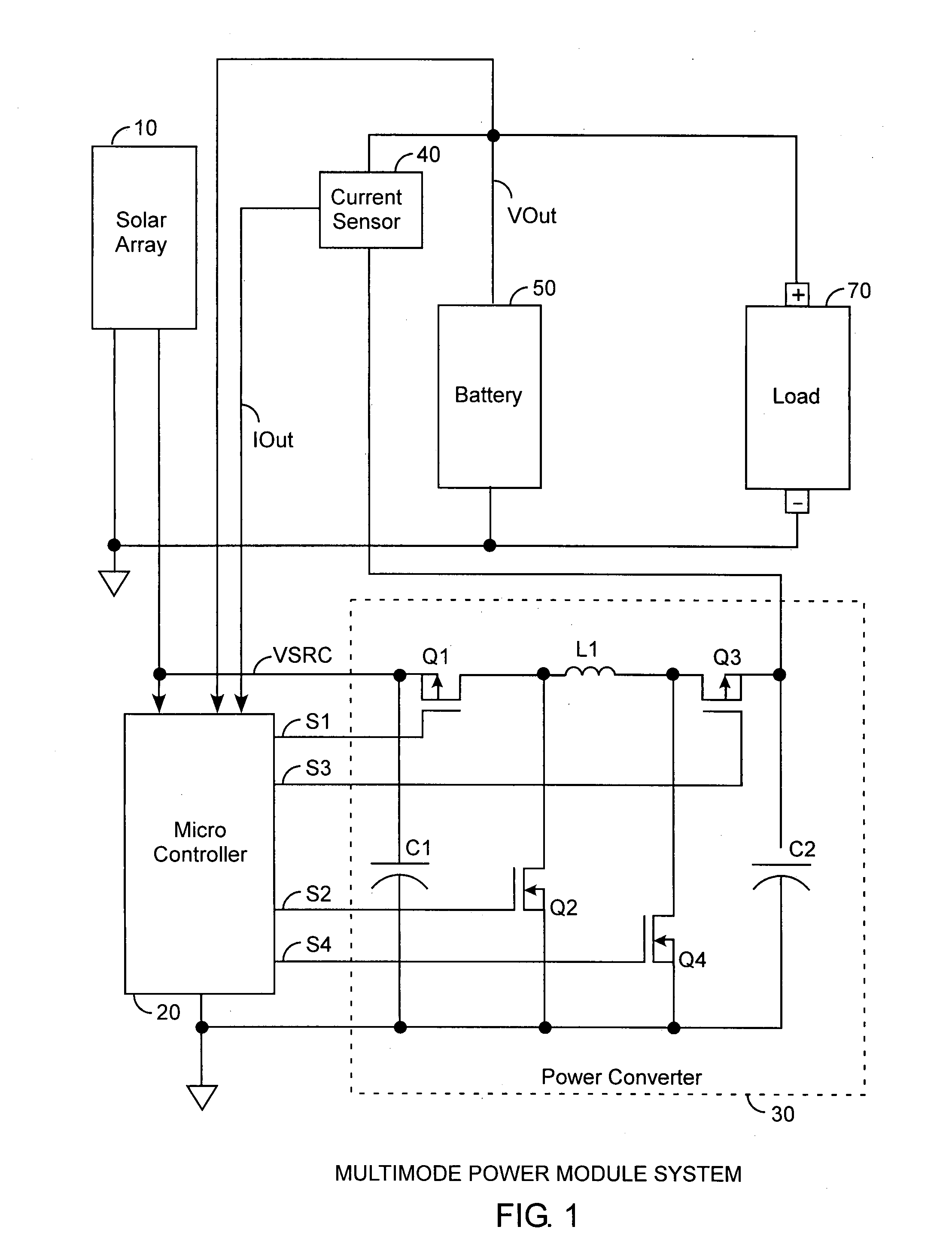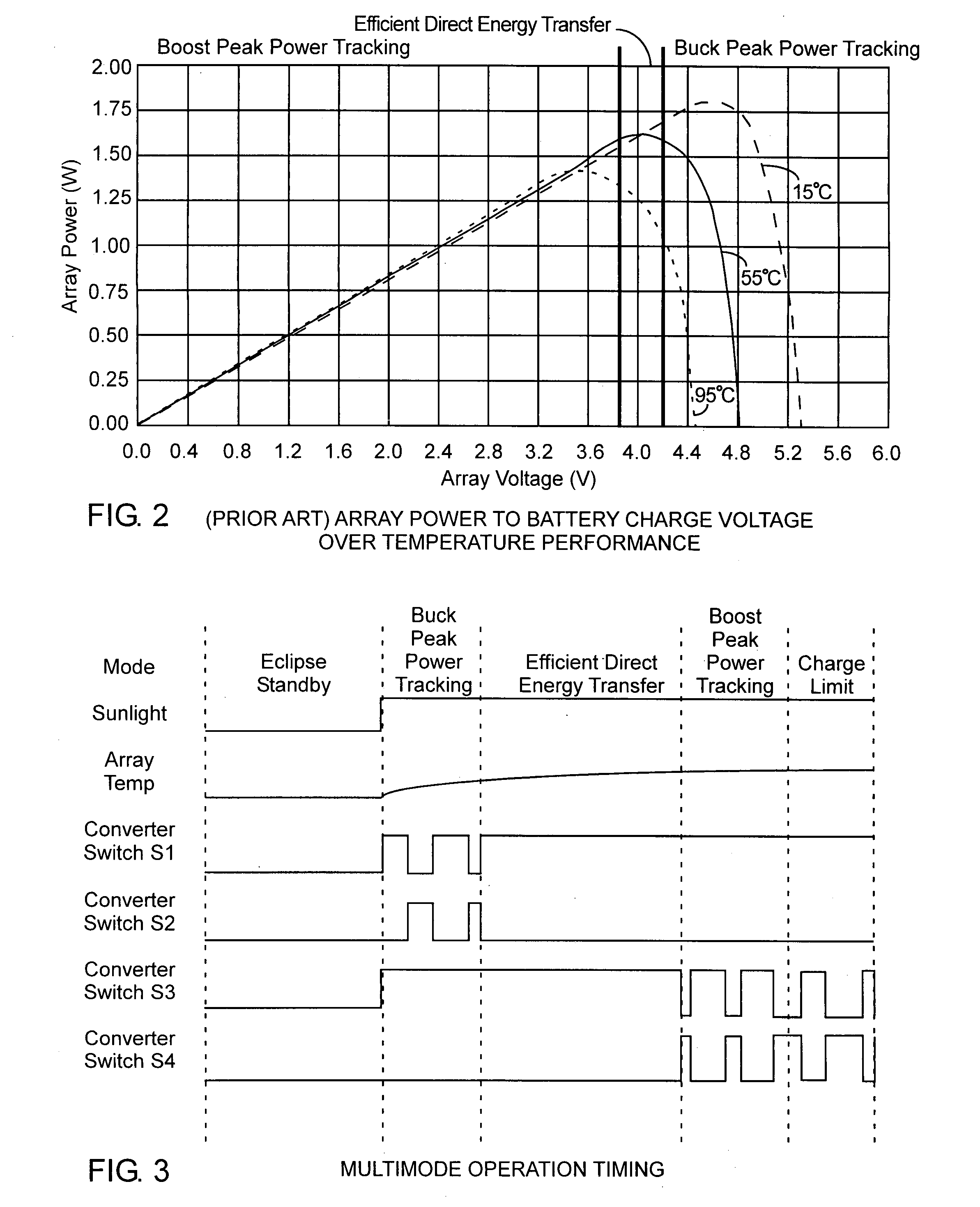Multimode power module
a power module and multi-mode technology, applied in the direction of electrochemical generators, secondary cell servicing/maintenance, transportation and packaging, etc., can solve the problems of low power efficiency transfer, disadvantageous significance of switching power loss relative to overall power, power loss associated with ppt switching, etc., to achieve the effect of maximizing output power, low power efficiency, and high power transfer efficiency
- Summary
- Abstract
- Description
- Claims
- Application Information
AI Technical Summary
Benefits of technology
Problems solved by technology
Method used
Image
Examples
Embodiment Construction
[0021]An embodiment of the invention is described with reference to the figures using reference designations as shown in the figures. Referring to FIG. 1, a multimode power module system is used to transfer power from a source 10, such as a solar array, under power transfer control of a microcontroller 20 using a power converter 30 and a current sensor 40. The power transfer is from the array 10 to an output that typically includes a battery 50 and a load 70. The power converter 30 provides an output voltage VOut that passes through current sensor 40 to the battery 50 and load 70. The source voltage VSRC and the output voltage VOut and the output current IOut are sensed by the microcontroller 20. The output current and output voltage determine output power delivered to the battery 50 and load 70.
[0022]The microcontroller 20 provides under process control, four switch output signals S1, S2, S3, and S4 that are respectively connected to, and used to turn on and off, four switching tra...
PUM
| Property | Measurement | Unit |
|---|---|---|
| load voltage | aaaaa | aaaaa |
| output voltage | aaaaa | aaaaa |
| source voltage | aaaaa | aaaaa |
Abstract
Description
Claims
Application Information
 Login to View More
Login to View More - R&D
- Intellectual Property
- Life Sciences
- Materials
- Tech Scout
- Unparalleled Data Quality
- Higher Quality Content
- 60% Fewer Hallucinations
Browse by: Latest US Patents, China's latest patents, Technical Efficacy Thesaurus, Application Domain, Technology Topic, Popular Technical Reports.
© 2025 PatSnap. All rights reserved.Legal|Privacy policy|Modern Slavery Act Transparency Statement|Sitemap|About US| Contact US: help@patsnap.com



